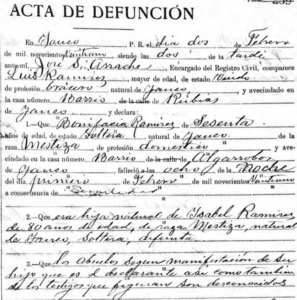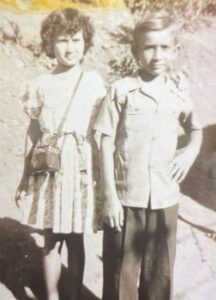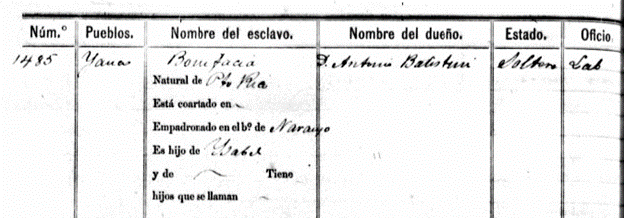“They said she was the daughter of a slave.”
“Wait a minute, Papi!”
I was on the phone with my father, talking about connections to relatives we had discovered through our Ancestry DNA testing. My father is from Yauco, Puerto Rico. He came to live in New York during his early teen years, but he always talks about his relatives and his memories of Puerto Rico.
I grew up knowing about Cayetano Canchani, my father’s maternal great-grandfather, a jeweler who came from Naples, Italy, and settled in Puerto Rico. I also knew about my father’s maternal grandmother, Maria Canchani y Ramirez, Cayetano’s daughter. Maria “cooked for rich people” in Yauco and every day would bring her family leftover food to eat.
“She was very dark with long hair.” My father and mother would describe her, never being able to conclude if she was Black or a Native from the island, or both.
 Cayetano was from Italy. Maybe his wife Bonifacia Ramirez y Rodriguez was a dark-skinned woman from Puerto Rico? Did Papi’s grandmother come from slavery? Was she Taino? Was she a mix? I always wanted to know more, but could not find answers to my questions.
Cayetano was from Italy. Maybe his wife Bonifacia Ramirez y Rodriguez was a dark-skinned woman from Puerto Rico? Did Papi’s grandmother come from slavery? Was she Taino? Was she a mix? I always wanted to know more, but could not find answers to my questions.
“Papi! Who is she? Who are you talking about?” I asked.
“My grandmother’s sister.”
“Wait a minute, Papi! If your grandmother’s sister was the daughter of a slave, then so was your grandmother! How do you know this, Papi? How do you know?”
“Oh, the family would talk about it . . .”
The 1910 census lists Bonifacia as Negra (Black) and her husband Cayetano as Blanco (White). Bonifacia’s death record lists her as mestiza (a mix of European and Indigenous ancestry).
I located a slave record for a Bonifacia in Yauco, Puerto Rico, in the database Puerto Rico, Registro Central de Esclavos, 1872 on Ancestry.com, listing her as Pardo (a person of mixed African, European, and Indigenous ancestry). The slave owner was listed as D. ( Don, Spanish for “Mr.”) Antonio Batistini. How could I confirm that this was my Bonifacia? Her birth was listed as about 1857.
Another search for the slave owner, D. Antonio Batistini, in Yauco, within the database, revealed he had only one other enslaved person: Dolores, 17, hijo de (child of) Bonifacia.
Turning back to the 1910 census, a search for Bonifacia in Yauco, born between 1852 and 1862 . . . only my Bonifacia turned up!
And finally, there it was confirmed. My father’s maternal great grandmother was an enslaved woman named Bonifacia Ramirez y Rodriguez. She was born in Yauco, Puerto Rico, around 1860, to Isabel, an enslaved woman. I had seen this slave record before, but was never able to confirm that this Bonifacia was my relative before now.
As this is my father’s matrilineal great-grandmother, my father also took a mitochondrial DNA test from FamilyTree. His mtDNA haplogroup is L3b, which is found in highest frequency in north and west Africa.
My father is now 85 years old, but it seems that the older he gets, the more he can remember about his childhood. Or maybe it is that the older I get, the better my questions are formulated to get information out of him. Either way, one piece of the puzzle is now found.
In this case, the story was always there—all I needed to do was ask!


